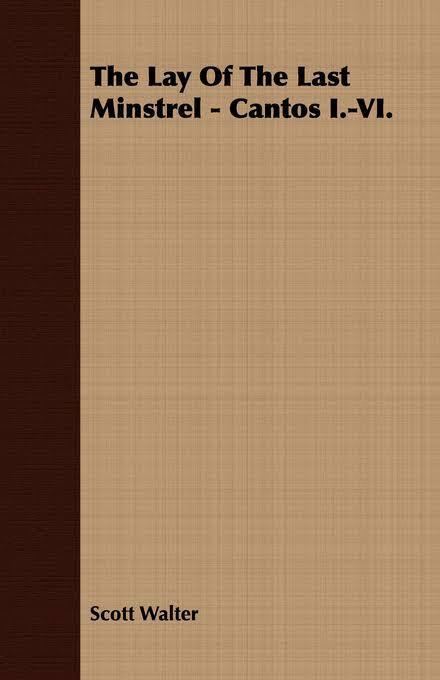Originally published 1905 | ||
 | ||
Similar Works by Walter Scott, Other books | ||
The lay of the last minstrel full audiobook
"The Lay of the Last Minstrel" (1805) is a long narrative poem by Walter Scott. (It should not be confused with The Minstrelsy of the Scottish Border, also by Walter Scott, compiled three years previously.)
Contents
- The lay of the last minstrel full audiobook
- The lay of the last minstrel sir walter scott audiobook
- Background
- Preface
- Plot
- Composition
- Themes
- Reception
- Cultural allusions
- References
The lay of the last minstrel sir walter scott audiobook
Background
Scott had spent considerable time in compiling a collection of traditional ballads. He began The Lay of the Last Minstrel in 1802 and intended it as part of The Minstrelsy of the Scottish Border. Scott was kicked by a horse, while on maneuvers with his cavalry regiment. He worked on the first Canto while recuperating. When the Countess of Dalkeith suggested he include the local legend of the goblin Gilpin Horner in his original tale of Border rivalries, he realized it would be too long for The Minstrelsy, and decided to publish it as a separate work. It was eventually finished in 1804 and published in early 1805.
Preface
"The Poem, now offered to the Public, is intended to illustrate the customs and manners which anciently prevailed on the Borders of England and Scotland. ...As the description of scenery and manners was more the object of the Author than a combined and regular narrative, the plan of the Ancient Metrical Romance was adopted, which allows greater latitude, in this respect, than would be consistent with the dignity of a regular Poem. ...For these reasons, the Poem was put into the mouth of an ancient Minstrel, the last of the race, who, as he is supposed to have survived the Revolution, might have caught somewhat of the refinement of modern poetry, without losing the simplicity of his original model. The date of the Tale itself is about the middle of the sixteenth century, when most of the personages actually flourished. The time occupied by the action is Three Nights and Three Days."
Plot
An aging minstrel who seeks hospitality at Newark Castle and in recompense tells a tale of a sixteenth-century Border feud. In the poem, Lady Margaret Scott of Buccleuch, the "Flower of Teviot" is beloved by Baron Henry of Cranstown an ally of the Ker Clan, but a deadly feud exists between the two border clans of Scott and Carr/Ker, which has resulted in the recent murder of Lady Margaret's father, Sir Walter Scott of Buccleuch by the Kers on the High Street in Edinburgh. Maragaret's widowed mother – Lady Janet – hates the Ker clan as a result, and is adamant in refusing her consent to any suggestion of marriage between the lovers.
Composition
Written in six cantos, the Lay is a verse romance in the gothic style. Scott's use of the metrical scheme was modified by the influence of the old ballad verse, of the old romance stanzas and of the verse forms of the old Scottish poets, which conferred an antique flavour on the form, as well as the substance, of his poem. Necessarily, the presentation is selective, poetical, and more or less idealised. The four-beat lines that create its distinctive galloping rhythm were influenced by a recital that Scott had heard of Coleridge's Christabel.
Themes
Ruth Eller states that The Lay of the Last Minstrel "is a good example of Scott's particular handling of basic Romantic themes." Donald Davie suggests that the plot is used as a vehicle to describe the historical milieu in which the action takes place.
The poem is concerned with loyalty to one’s homeland, but also with the manner in which the poet draws his art from his connection to his country and traditions.
Reception
The Lay was an immediate success, making Scott famous. he opening lines of Canto 2, "If thou woud'st view fair Melrose aright, Go visit it by the pale moonlight;" drew hundreds of tourists to Melrose Abbey.
